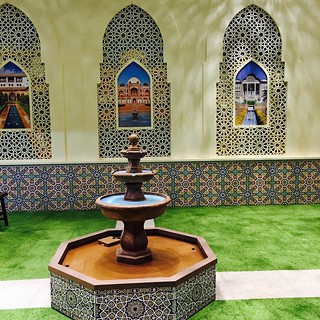I am proud to announce the opening of the exhibit America to Zanzibar: Muslim Cultures Near and Far at the Children’s Museum of Manhattan. I served as the lead academic advisor the exhibit, and it is stunning. Below is a link to my Flickr album of the space, which I will continue update as the exhibit goes on for the year.
Related Posts
BBC News – Muslim America moves away from the minaret
Nice review of the state of architecture for Muslims (not necessarily Islamic architecture) in the US. I particularly like the point Maryam makes, let’s go back to praying together, instead of this modern notion of segregating the sexes. BBC News – Muslim America moves away from the minaret. Architect Maryam Eskandari, former associate director of the American Institute of Architects, is touring the US with a photo exhibition illustrating the transition of American mosques from traditional to postmodern design. She says Islamic architecture has long been subject to personal interpretation and set in a cultural and historical context.
Children’s Museum of Manhattan – America to Zanzibar – POLITICO
DE BLASIO press shake-up — CUOMO bans insider lobbyist — REDSTONE saga – POLITICO. NYC Council Speaker Melissa Mark Viverito, NYC Council Majority Leader Jimmy Van Bramer, NYC Council Members I. Daneek Miller and Helen Rosenthal toured the America to Zanzibar: Muslim Cultures Near and Far exhibit at the Children’s Museum of Manhattan earlier this week with the museum’s executive director Andy Ackerman, the museum’s honorary board chair Laurie M. Tisch, museum board member Judith Hannan, the exhibit’s academic advisor Hussein Rashid and others. America to Zanzibar: Muslim Cultures Near and Far is a groundbreaking new interactive exhibit for children…
Bismillah Raven
I am always looking for interesting artwork, especially as it relates to Islam. Below is the Arabic phrase “bismillah,” “in the name of God,” done in a Native American style. Details from the artist are here, and an article about the piece can be found here (another take here). taken from here.

